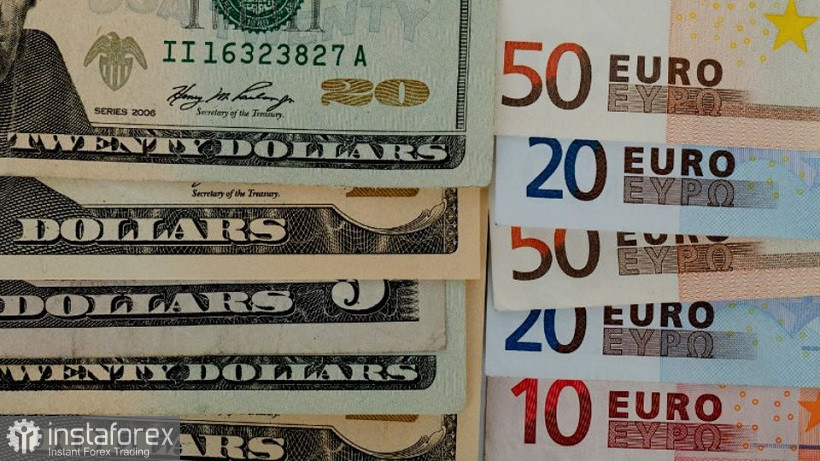The bears of the euro-dollar pair took a break and suspended the downward tour. A corrective pullback was brewing yesterday, but the price was already falling by inertia, overcoming all support levels unattainable over the past 20 years. Now—consolidation and a small correction. After all, the next price breakthrough should lead to a level of parity, that is, to a powerful, psychologically important price barrier. There is a high risk of catching a "price bottom" in this price area since the growth of the US currency is more of an emotional nature.
The excitement around the greenback is primarily due to the flight from risks amid the strengthening of anti-risk sentiment in the markets. As a rule, such price declines or rises are very fleeting, while further prospects look rather vague. The pair can hover in the range of 1.0150–1.0300 for several weeks, or form a price bottom, pushing off from it for an "upward hike" to the area of the 7th figure.

Note that the EUR/USD sellers were besieging the 1.0340 support level (a five-year price low) for almost two months before deciding on a downward break. How long it will take market participants to overcome the 1.0000 mark is an open question. Even the assault on the parity level is even more questionable, given the first signs of a slowdown in inflationary growth in the United States (we are talking about the core price index for personal consumption spending, which has been slowing for the third month in a row). Therefore, traders, for the most part, do not risk holding short positions at such long-term price lows: as soon as the downward impulse began gradually fading, sellers took profits, after which the price froze at the border of 1 and 2 figures.
However, longs now look even riskier. The euro is under the yoke of numerous problems that are growing every day like a snowball. In the center of attention, first of all, the aggravated energy crisis. The gas price on European exchanges has already exceeded $1,900 per thousand cubic meters, the highest figure in the last four months. The cost of "blue fuel" has been actively growing since the beginning of the week—on Monday afternoon, for example, gas cost $1,700, and by evening it rose to $1,800 per thousand cubic meters.
Gas and energy prices are rising amid a reduction in supplies from the Russian Federation. Energy prices in the Eurozone rose by almost 42% in June. German electricity contracts for delivery next year hit their highest trading prices in history: the price jumped on Monday by 13% to 325 euros per MWh. A similar situation has developed in France.
The largest industrial energy consumers in Europe have warned the authorities that with the advent of cold weather, some plants could stop due to an acute fuel shortage, and emergency measures introduced to limit its use, according to the Financial Times. Against such prospects, experts from large financial conglomerates continue to voice pessimistic estimates, predicting a recession in the eurozone economy as early as the 4th quarter of this year. In such circumstances, the ECB must act cautiously: on one side of the scale—the fight against inflation, on the other—the risk of recession. The central bank is forced to walk between the raindrops, excluding the most radical scenarios, despite the hawkish expectations of many traders.
While the Fed continues to show its determination, the minutes of the June meeting of the Fed, published yesterday, suggested that the regulator intends to further aggressively tighten monetary policy. However, the June meeting was held even before the release of the report on the growth of the core PCE, so currently, the corresponding degree of "hawkishness" can be reduced. But not in the context of the July meeting.
Judging by the rhetoric of the Fed representatives (primarily those who have the right to vote in the Committee), we can assume that the 75-point rate increase at the July meeting is practically a settled issue. "Fed Minutes" only added confidence in this. According to the text of the document, the probability of a rate hike by 75 basis points at the next meeting in July "is assessed as high." Moreover, the protocol also contains another phrase that can be interpreted unambiguously in favor of the dollar: "over time, it is possible to conduct an even tougher policy."
Thus, the EUR/USD pair is now in a clamped state. On the one hand, sellers are in no hurry to storm the parity level, for fear of catching a "price bottom". On the other hand, the prevailing fundamental picture is not conducive to a trend reversal. Therefore, in the current conditions, it is advisable to open short positions on corrective pullbacks, with downward targets of 1.0200, 1.0150. It is too early to talk about lower price values.





















